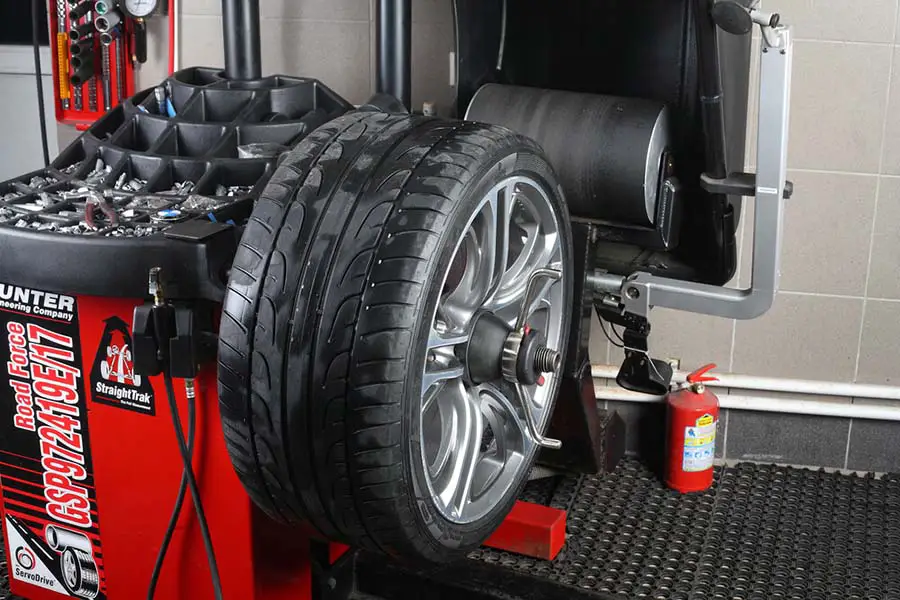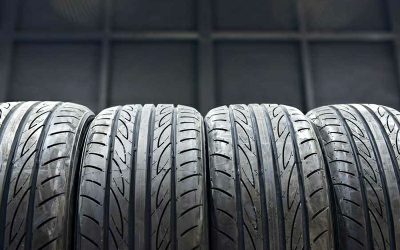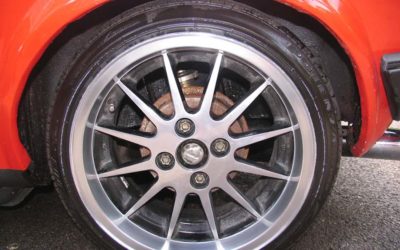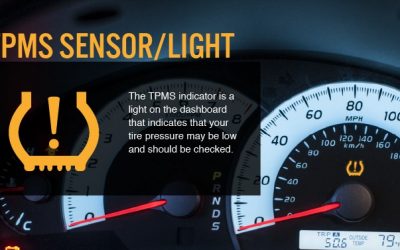Mechanicians might tell you that the cost to mount and balance tires you pay can prevent much more expensive repairs in the future. Doubt will, therefore, arise as you wonder whether they try to add value to their services.
Yet, the fact is that we are inclined to wait for problems to appear, then struggle with solutions. Instead of letting your car suffer, taking good maintenance of it is a better idea.
This article will deep dive into why you should rebalance and mount your car regularly. Also, you can check out the average mounting and balancing pricing.
Mounting And Balancing Tires
Before getting right to the price check, it is essential to grasp what tire installations and balances are and wherever paying for these services is worth the money.
The following content includes three sections that walk you through simple definitions and detailed processes of mounting and balancing tires.
What Does It Mean To Mount And Balance Tires?
Tire mounting indicates putting tires onto the wheels installed on the vehicle’s axles. The tire balancing process refers to the wheel alignment to ensure the smoothest ride. It involves making the tire’s center of gravity equal to the axis of the rotator.
The Process Of Mounting Tires
With A Tire Machine
- Lubricate the tire bead and the rim edge with the most suitable substance. The note is not to use soapy water or grease as it isn’t slick enough and will be hard to clean off afterward.
- Put the tires on rims and push them against the rim’s edge as far as possible.
- Put the lower bead diagonally towards the placement of the tire.
- Rotate the turntable by pressing the pedal to install the lower bead onto the rim.
- Position the upper bead at the same diagonal angle and turn the table, so half of the bead sits.
- Press that half of the bead to make the tire drop down the rim.
- Turn the table little by little till the tire is properly positioned. You can use knuckles to support this step.
- Place a hose onto the valve stem and press the pedal for activation. Pop sounds will inform you of fitting the bead to the rim’s edge.
- Put the valve stem core back, and inflate the tire. The gauge on the machine points out how much air pressure is enough.
- Check whether there is an air leak in the tire for timely action.
By Hand
- Put the rim on a carton or a blanket/towel.
- Lubricate the rim and tire bead after cleaning well.
- Press on one edge of the tire to put the tire on the rim.
- Make the rest of the bead go down the rim.
- Insert one section of the upper bead under the rim’s edge and hold it with your knee(s).
- Place a lever bar between the tire and the rim’s edge, and move outwards to put another section of the tire.
- Repeat steps 5 and 6 to the lower bead.
- Inflate the tire with your car’s standard pressure.
- Check the status to spot signals of any air leaks.
The Process Of Balancing Tires
By A Professional Mechanic
There are three common ways of balancing tires, depending on your car’s mounting type.
- Static balancing works the best for the one-line balancing process. A technician places the tire on a bubble balancer or a supporter to spot small-weighted tires.
- Dynamic balancing involves the usage of a computer or a tire pressure monitoring system to detect the off-balance between tires. Also, it points out the necessary weight level to balance the tire.
- Road force balancing combines the work of a tire pressure monitoring system and testing on driving conditions. So, it generates the most precise results.
By Yourself
- With a balancer: Spin the tire on the balancer and wait for it to settle if you have a static one. Otherwise, you do not need to wait. For any sign of imbalance, mark it with a chalk or marker.
- Without a balancer: Clean off all the dirt on the steering wheel before weighing it. Drive the tire at a speed of around 55 mph. If you feel the vibration, reattach the weight 45° from that position for the wheel alignment.
Why Should You Mount And Balance Tires?
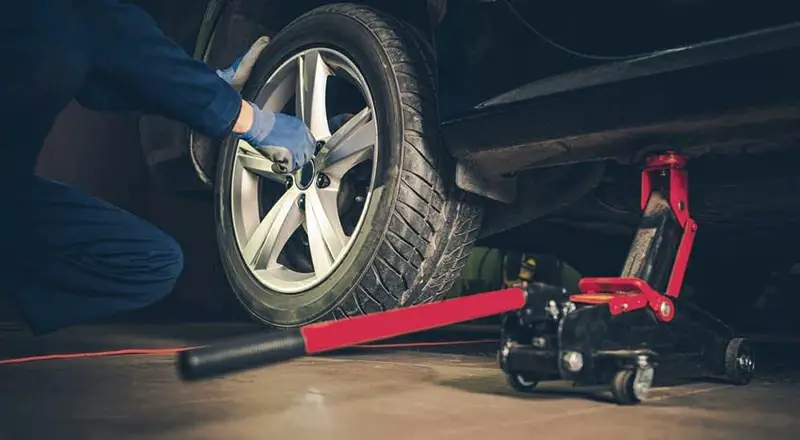
Understanding the problems, you will encounter with unbalanced tires can clarify the importance of mounting and balancing tires.
A car moves on its wheels as a person walks on his legs. So, if the legs are off-balance, how can he walk normally? It is the same with the tires.
Worn tires can be the reason for a bumpy ride. Uncomfortable ride vibrations will profoundly impact your driving experience. So, tire balance is critical for a smooth ride.
Also, it can enhance your gas mileage as evenly-distributed weight across tires reduces excessive tire wear. Fuel efficiency will be an obvious outcome.
Another benefit is the longer lifespan of tires. Tire balance can also save you from costly repair of damaged suspension due to extreme vibration.
Lastly, uneven wear or unbalanced tires can lead to severe accidents, especially on highways. So, checking your car’s tires can help you have safer drives.
In a nutshell, there are five main benefits of balancing tires.
- Comfortable driving experience.
- Enhanced gas mileage.
- Extending tire lifespan.
- Maintaining your car’s suspension.
- Safer drives on balanced tires.
What Is The Average Tire Mount And Balance Cost?
All the precious benefits above might persuade you of how crucial it is to mount and balance your tires. It is time to check how much money you pay for such automotive services on tire mounting and balancing.
The tire mount and balance cost will be your next concern. The short answer is that your vehicle type will determine how much you pay for mounting and balancing tires. Tire size is among the influential factors. The larger tires are, the more additional costs you have to pay.
The range from 13 to 45 dollars per tire is the average among car types for mounting. And it will be around $10 to $15 per tire for balancing.
Yet, it can be higher if your car uses winter tires which take more time and effort to balance and mount. The expected tire balancing fee is from $8 to $10 per tire.
The type you choose to have your tires balanced and mounted also impacts the installation fees. Tire manufacturers might indicate the recommended mounting and balancing types in manuals. Make sure that you check it out!
Some dedicated tire shops or maintenance services for your reference, such as Costco Wholesale Tire Center, Green Bay Tire 60, Big-Box King Walmart, Jensen Tire South, etc. The top elements for a suitable selection are service quality, your tire mounting, and balancing the budget.
For a Goodyear tire & service, you should invest a certain amount of money. Yet, you can get discount tire installation or hot deals for high-quality services without inexpensive tires. It means you can have an affordable option if you have done good research.
FAQs
After getting insights into the average price to mount and balance tires and their detailed processes, you might have other questions.
So, we compile two top-asked questions related to this topic below. Hopefully, it can help you end up with the most suitable solution!
Can I Mount And Balance Tires By Myself
It is possible but not recommended. Doing it yourself surely reduces most of the cost, just in case you have the proper kit for vehicles and have done this work before. Also, you need to use your muscular strength and a lot of effort to complete these processes.
If you can do it at home, you should still bring it to the auto shop to test and perfect it. Such a double-check guarantees safe driving and security, with less maintenance and component replacement afterward.
If you worry about time-consuming factors, booking an appointment online is now possible in most professional auto repair shops. So, you can proactively arrange your appointment time. Another alternative is to call a mobile tire installation service!
Without proper appliances and experience, mounting and balancing tires by yourself can cause terrible consequences. You may end up damaging your wheel, stretching tire rotation, impacting your vehicle performance, and endangering your safety.
Yet, it must take longer and generate less effective outcomes if you insist on mounting and balancing tires yourself. In a nutshell, you should have a professional mechanic, courtesy vehicle inspection, and disinfection of vehicle surfaces!
When Should Tires Be Mounted And Balanced
If you can spot any signal of irregularities, you should immediately bring your car to professional garages for adjustments or repair. Yet, it might be too late as your car might have suffered some damage.
Thus, it will be best if you prevent unpleasant accidents by regular checks. So, how often you should have your tires mounted and balanced matters.
The recommendation is to rebalance your tires every 12,000 miles. It might not reach extreme damage or imbalance then. However, such periodic vehicle maintenance can save you from costly repairs in the future.
Note that it still heavily depends on vehicle manufacturers’ designs for each car. Some automotive models require tire mounting and balancing when your car drives from 4,000 to 9,000 kilometers.
Conclusion
It is never redundant to invest in necessary car maintenance services. As a result, you can enjoy a smoother ride without worries about sudden accidents. Mounting and balancing tires can generate a comfortable ride with safety.
Hopefully, it can serve as a key for cautious customers to find the best solution for their car maintenance.

